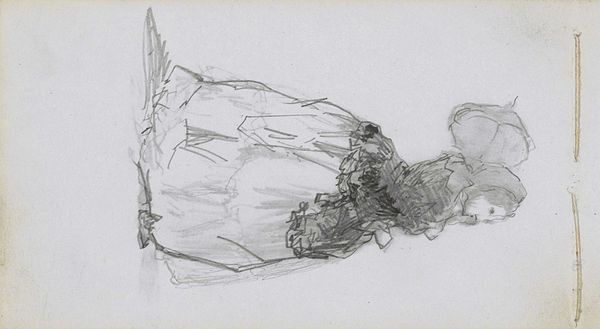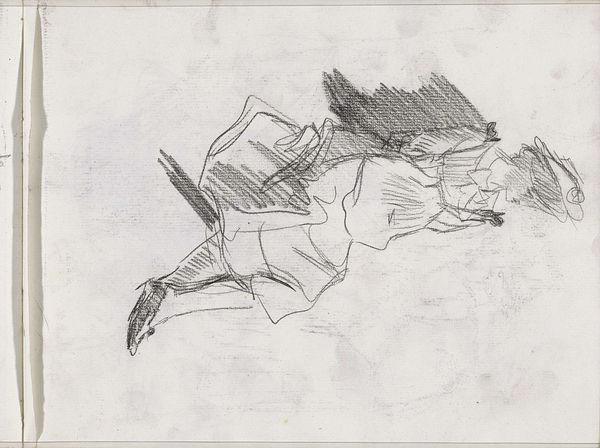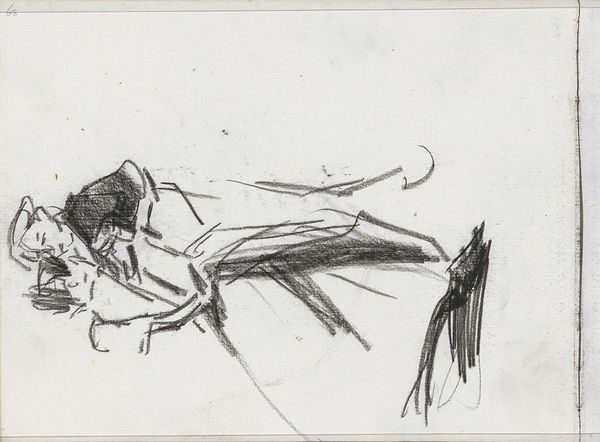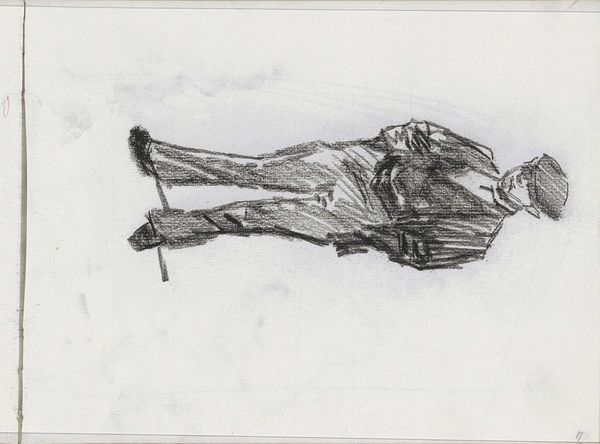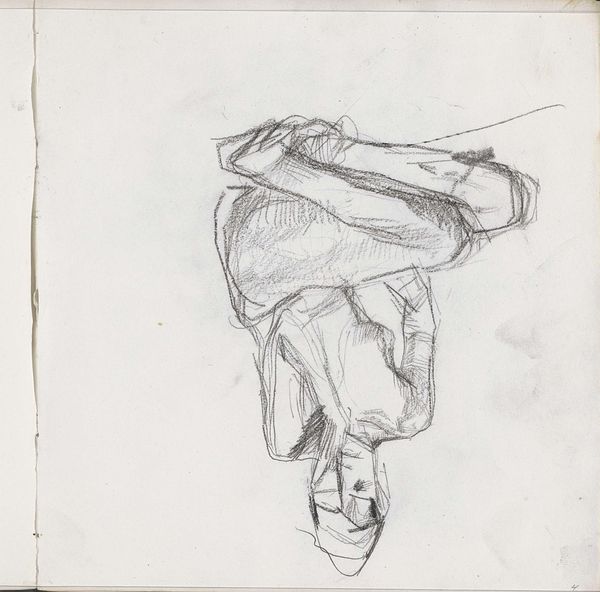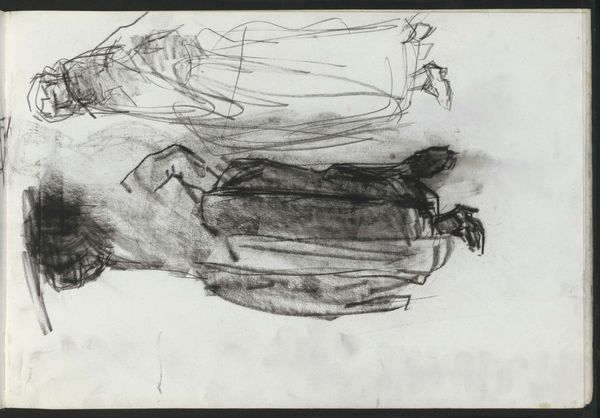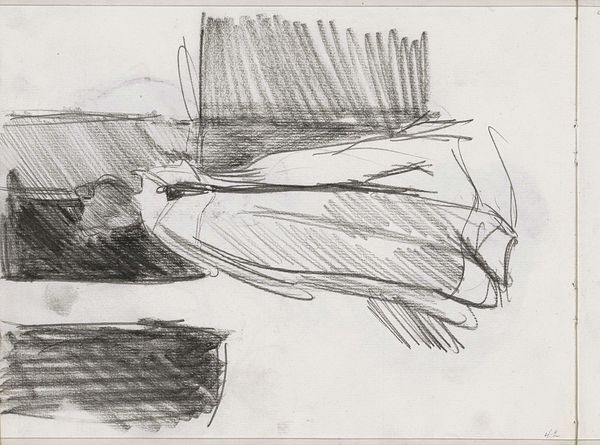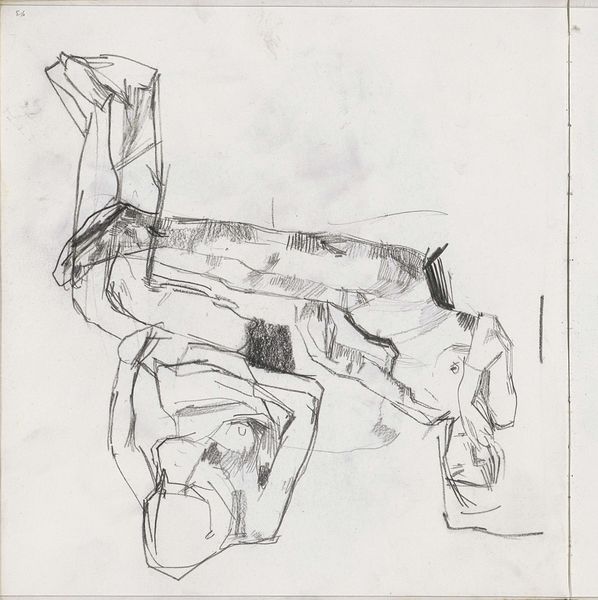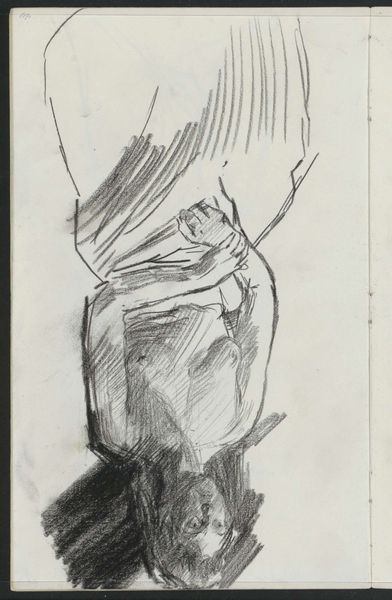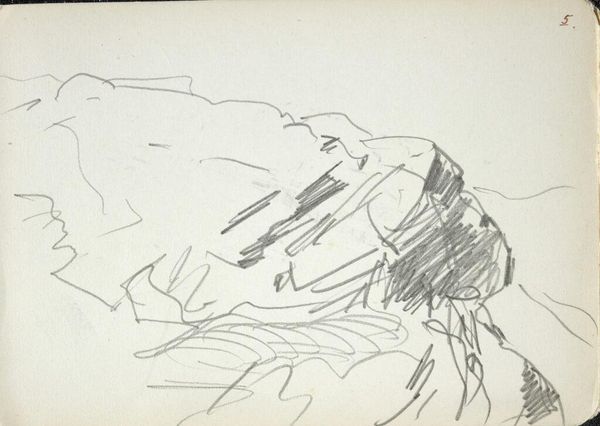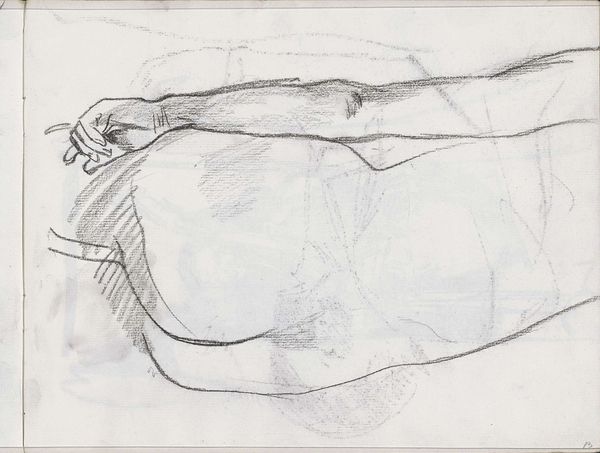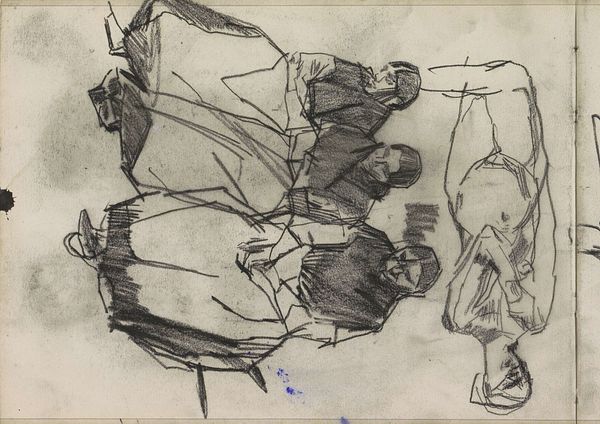
Copyright: Rijks Museum: Open Domain
Curator: Immediately, I'm struck by the vulnerability in this quick sketch—the raw, almost hesitant lines suggesting a moment captured in private. Editor: This is "Dancing Couple" by Isaac Israels. This study, executed in pencil and ink on paper sometime between 1875 and 1934, offers a glimpse into the artist’s process. It currently resides here at the Rijksmuseum. Curator: The figures seem intertwined, yet the looseness of the sketch leaves room for interpretation. Are they embracing? Or simply passing each other by? There’s an ephemeral quality that I find quite moving. The minimal lines carry so much unspoken weight. The female figure especially dominates in the lower plane, but appears incomplete, as if she's disappearing. Editor: Absolutely. Consider the social context of dance during this period. For women, dancing was a crucial way to find a male partner in life. Yet, because these two seem separate, distant even, could this sketch represent a commentary on the often impersonal interactions fostered in a patriarchal society? Israels would certainly be familiar with this dynamic in Europe at the time. Curator: Interesting… The dance, here, certainly is a signifier of both connection and distance. It recalls earlier symbols and poses within visual and performance arts: embrace and confrontation. A compelling interplay. I wonder about that diagonal emphasis though; the directionality gives the piece a sense of unsettled dynamism. It creates a tension—a precarious balance. Editor: That tension perhaps mirrors the precarious position of women navigating social expectations at the turn of the century. There is a feeling here that she could tip over into some invisible space outside the image, while the male figure, higher up, seems ready to disappear completely, dissolving in ink and light. Curator: Ultimately, what captivates me is how Israels, with just a few lines, encapsulates so much of the human condition—the search for connection, the transience of encounters. The symbol, or even implied sign, of the figures, transcends the drawing itself. Editor: Yes. The way this sketch speaks to societal pressures on women is really important, prompting us to view Israels's piece not just as a simple drawing, but as a poignant reflection on love and life in past centuries.
Comments
No comments
Be the first to comment and join the conversation on the ultimate creative platform.
